-

Bringing neighbours closer
Welcome to the Interreg V-A Latvia–Lithuania Programme 2014–2020!
About the programme -

-

Cozy spaces in Kraslava
07 July 2022
Cozy spaces in Kraslava
For some time now, residents and guests of Kraslava have been able to see five cozy spaces developed and located on the streets of Kraslava. They are part of the Practical Arts project. The objects are unusual in that they are made of used things and materials, therefore drawing the public’s attention to the current problem of waste and pollution all over the World.
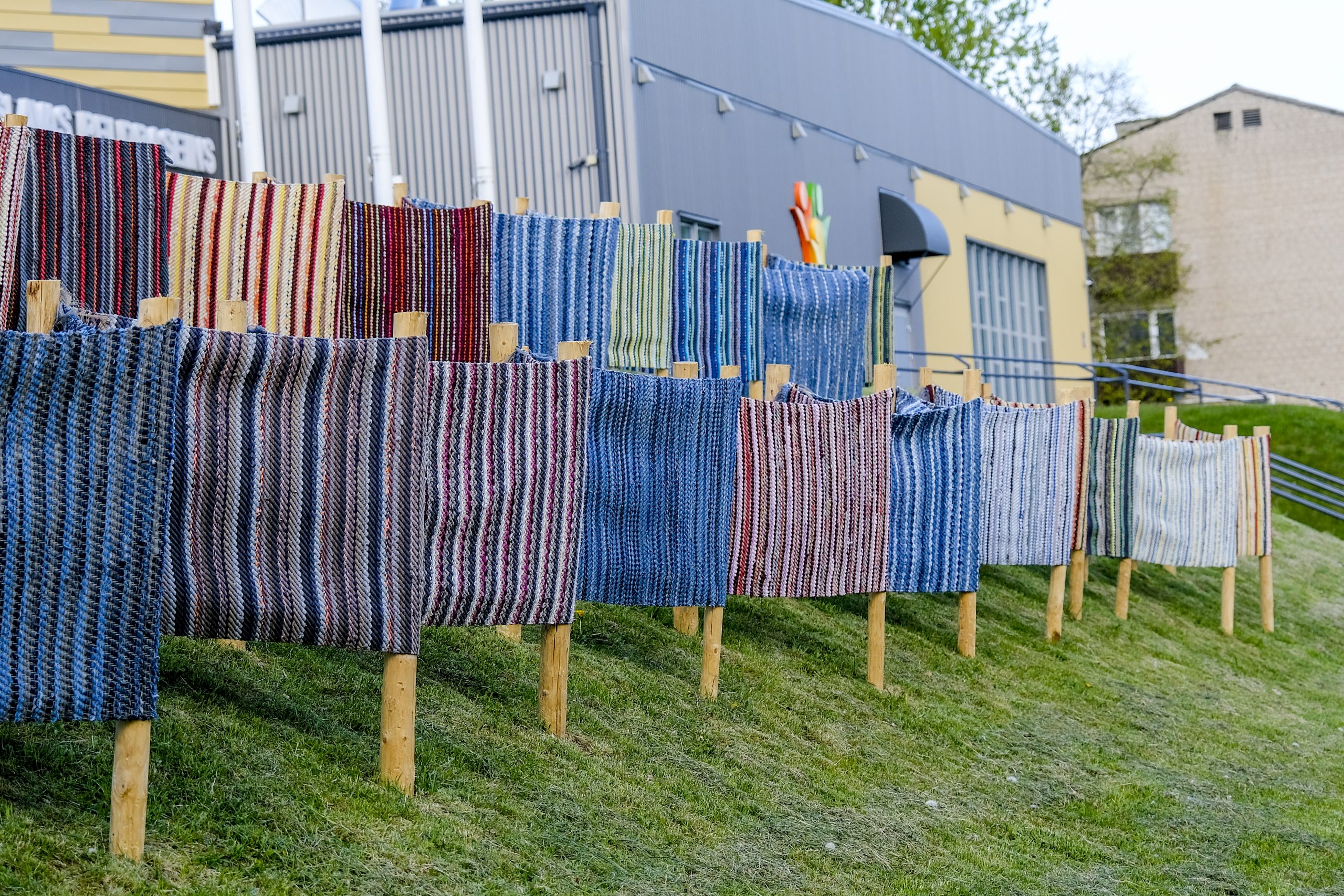
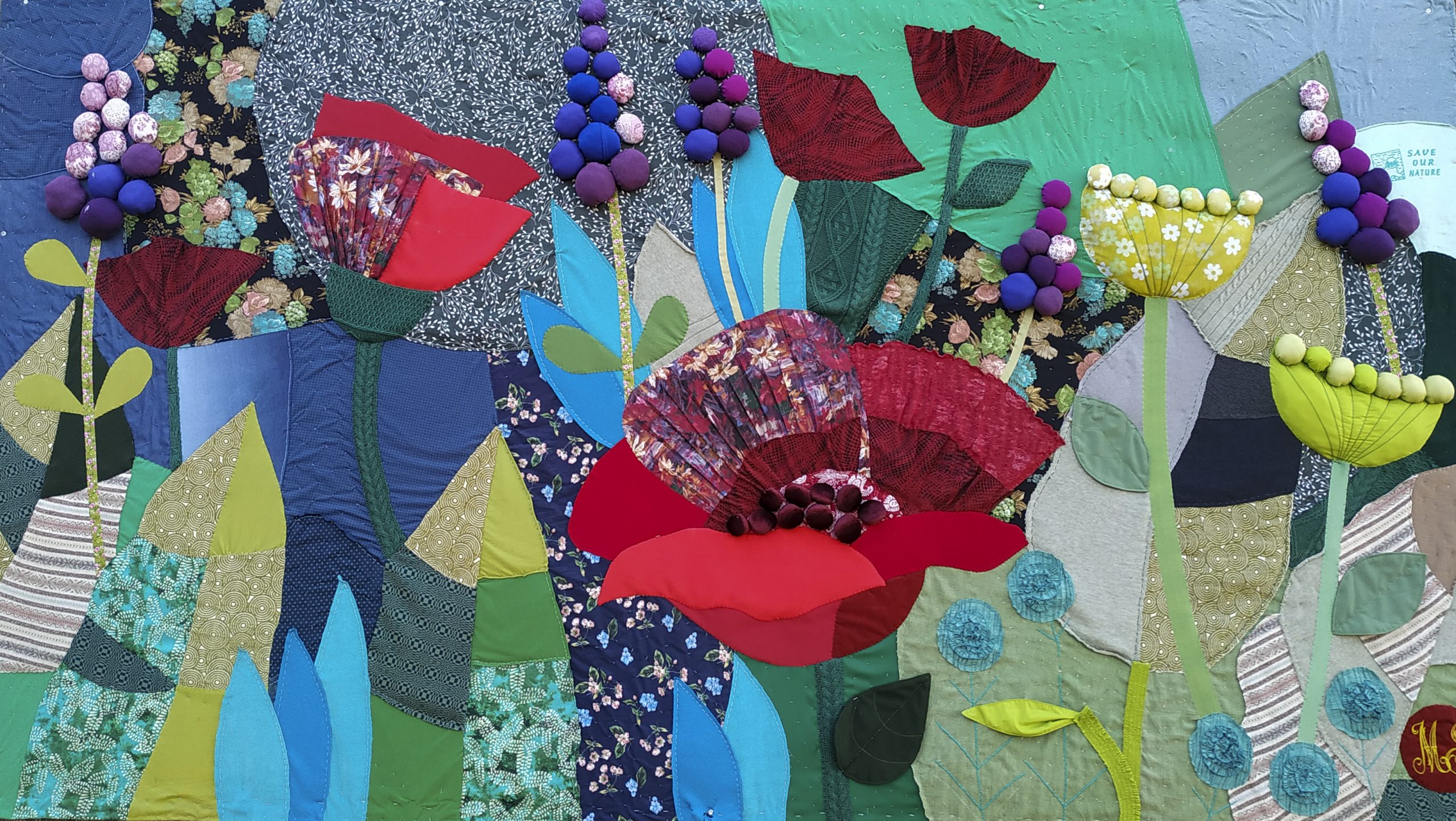
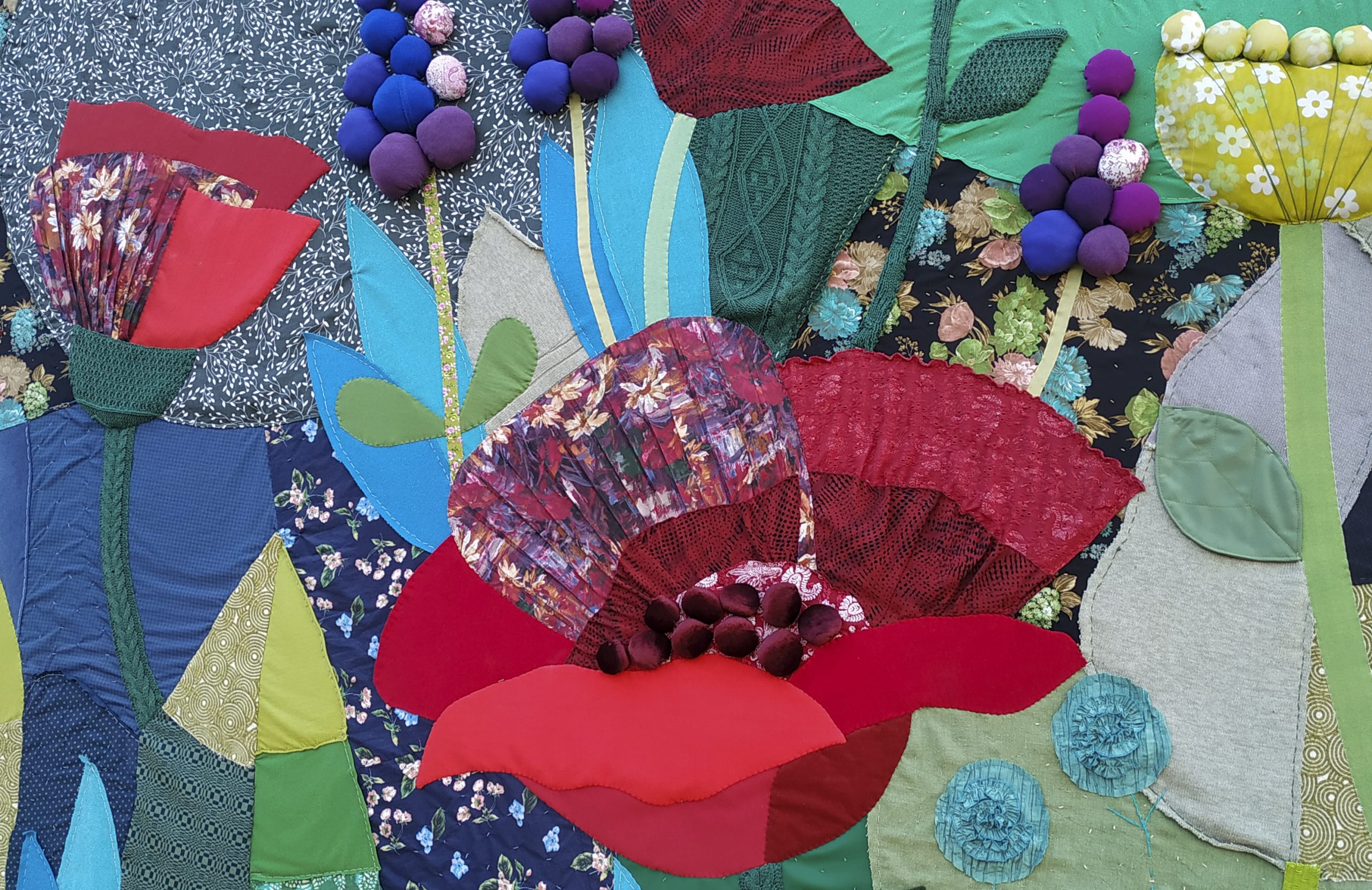
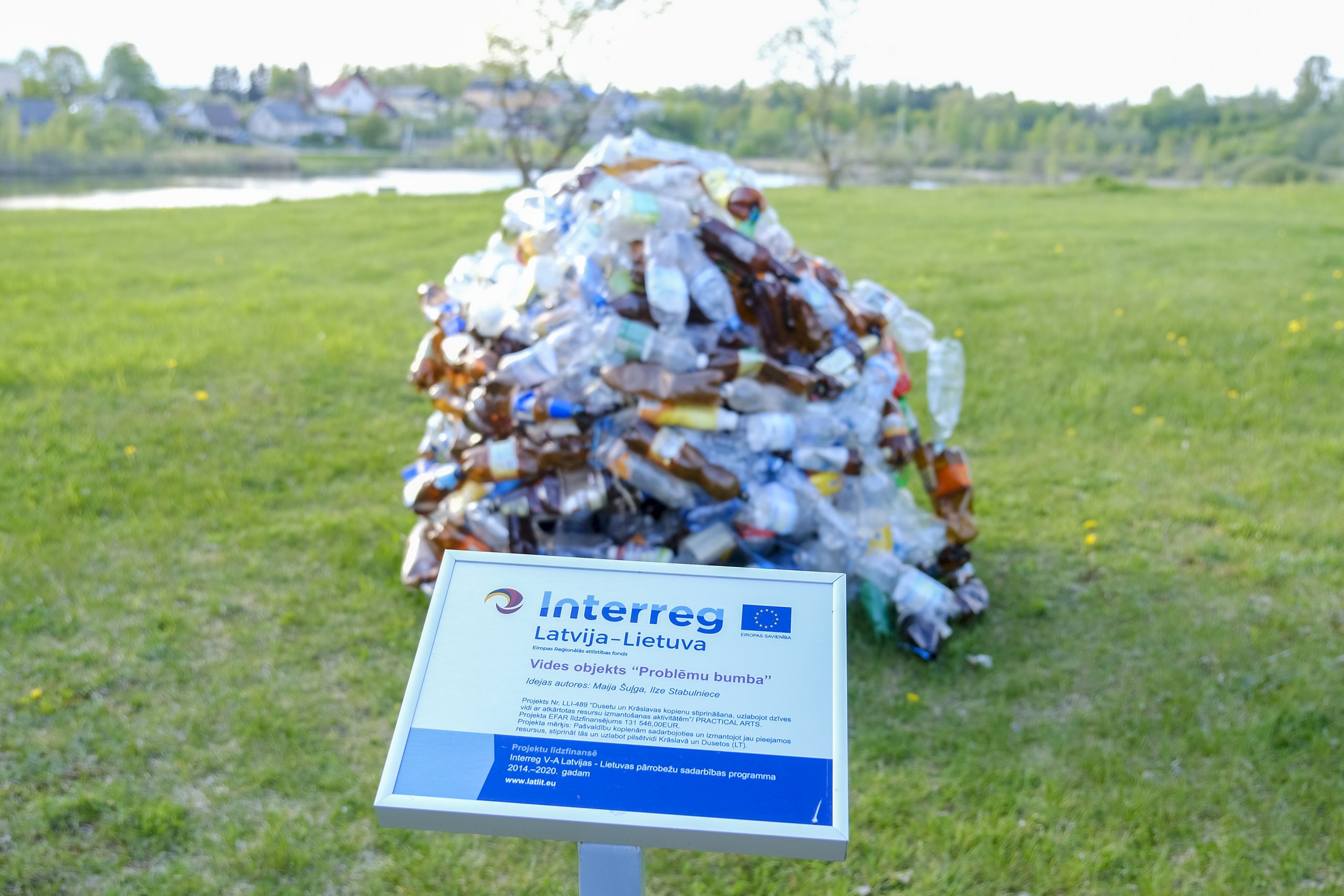
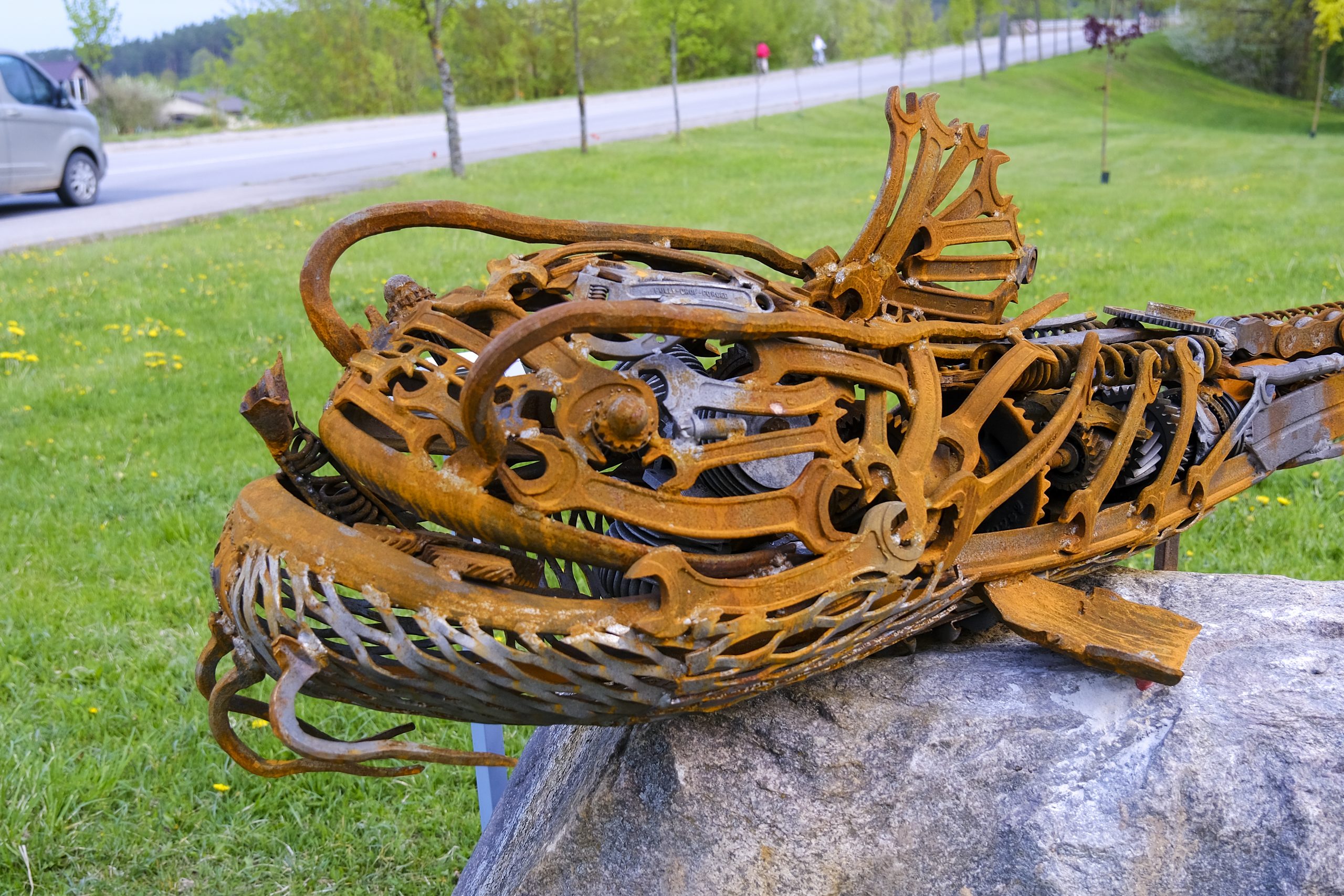
In the park of Krāslava Castle, by the pond, you can see the name of environmental objects created by combining used wood and glass. It successfully fits into the landscape of the park and attracts people’s attention with its visually attractive appearance. The authors of the beautiful work of art are Vadim Bogdanov and Elvīra Škutāne.
A metal catfish proudly standing by the bridge over the Daugava is made of used metal spare parts and tools. Valērijs Konstantiovs, a master of metalworking, has successfully turned these used objects into works of art.
A bright and beautiful flower meadow can be seen in St. Ludvigs Square on the stone wall of the former polyclinic. There is a tapestry made by the artist Maija Šulga from used textiles. The tapestry has also been positively valued by the local people, acknowledging that this environmental feature enlivens this part of the city and makes it brighter.
Another object is located by the Kraslava swimming pool. On the slope between the pool and Raiņa Street, there are floor paths woven from used jeans. The weaver of the folk art studio “Dubna” did the work with great responsibility. The environmental object of high-quality floor paths has become a popular place for photography.
The fifth environmental object, the plastic bomb, is making people think about the impact of waste on nature. A plastic ball made of used plastic bottles is located on the shores of Lake Persteņa. A large number of used bottles are found in water bodies and on their shores. This may not be the most attractive environmental site to be installed under this project, but it clearly states that society needs to focus more on a lifestyle based on reducing waste daily.
All five environmental objects are designed to motivate people to give used things, objects, and materials a second chance, creating new things, environmental objects, works of art, and practical things.
The article was created within the frame of the Project LLI-489 “Strengthening the municipalities of Dusetos and Krāslava by improving the living environment through reuse activities” or “PRACTICAL ARTS”, co-financed by the European Union Interreg V-A Latvia-Lithuania Cross-border Cooperation Program 2014-2020. Total project costs – 154 760 Eur. Project co-financing from the European Regional Development Fund – 131 546 Eur. The project implemented by the non-governmental organization “Sprendimų centras” from Lithuania and the association Euroregion “Ezeru zeme” from Latvia. The aim of the project: to strengthen the municipalities and solve their problems by cooperating with local governments and using already available resources. The planned result of the project is the modernization of two remote border towns through the reuse of resources. As a result, society will gain motivation and awareness of the efficient reuse of resources, thus protecting the environment and resources in general, as well as, by working creatively, creating environmental objects for its town and strengthening its belonging to it. This article has been produced with the financial assistance of the European Union. For the contents of this article responsible the association Euroregion “Ezeru zeme”. The views expressed in this publication cannot in any circumstances be regarded as the official position or reflect the views of the European Union.
Last updated: 03.11.2025 14:05
